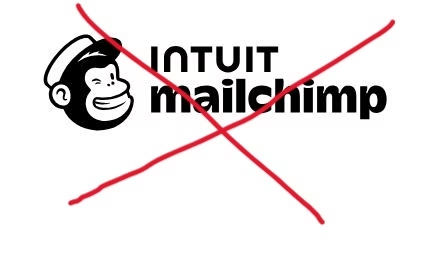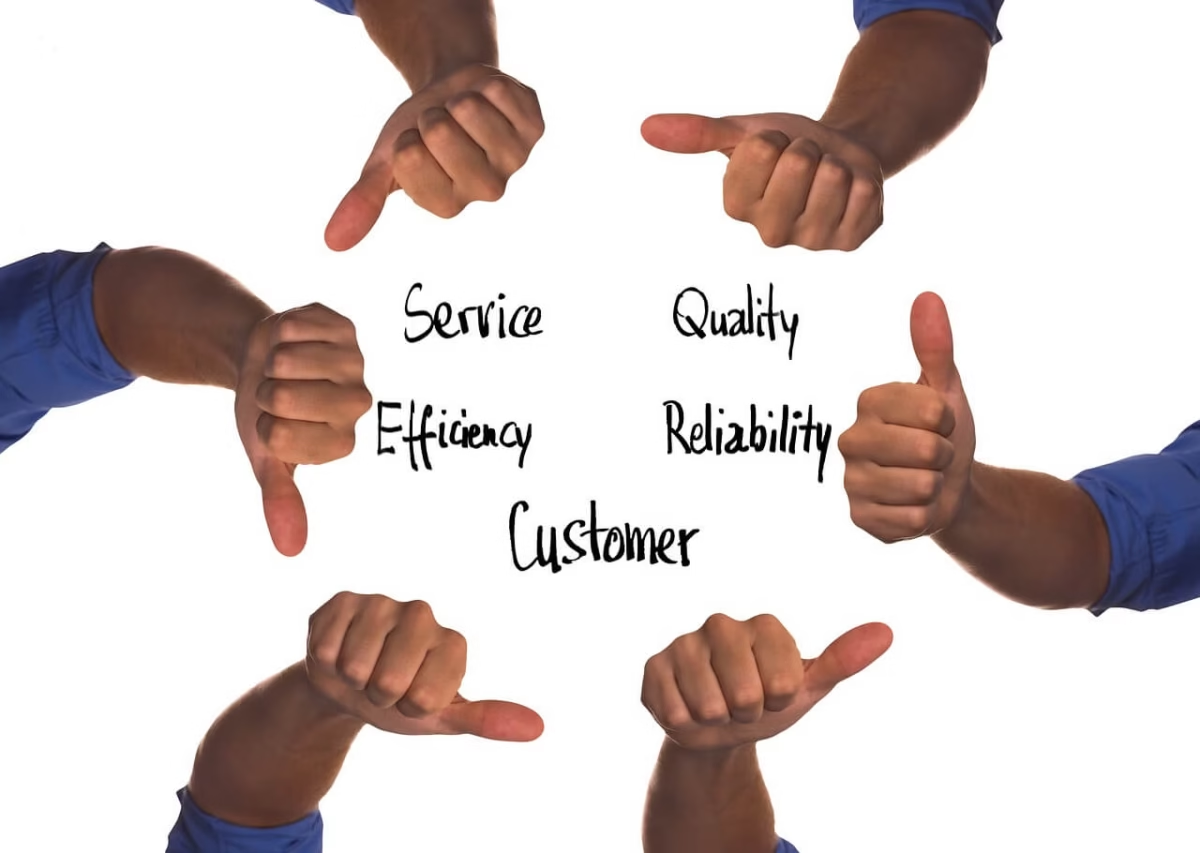Running an online business can be exciting, but it often comes with challenges like time-consuming tasks, increasing competition, and the constant need to grow revenue. If you feel overwhelmed by daily operations or struggle to expand your business without sacrificing quality, automation and scaling are the solutions you need.
By automating repetitive processes and implementing scalable systems, you can free up time, improve efficiency, and grow your business without burning out. Many successful entrepreneurs leverage automation tools, smart workflows, and outsourcing to scale their businesses while maintaining high profitability.
In this guide, we’ll dive into:
- The key differences between automation and scaling
- The best tools and strategies to streamline your operations
- How to grow your online business efficiently without overworking
Whether you run an e-commerce store, a blog, a coaching business, or a freelance service, these strategies will help you work smarter, not harder. Let’s get started!
1. Understanding Automation and Scaling
To maximize your business growth, it’s essential to understand the difference between automation and scaling—and how they work together.
What is Business Automation?
Business automation is the process of using technology to handle repetitive tasks without requiring manual intervention. This allows you to focus on more strategic activities while increasing efficiency and reducing errors.
Examples of business automation include:
- Email Marketing Automation: Sending pre-written emails based on user actions (e.g., welcome emails, abandoned cart reminders).
- Chatbots & AI Customer Support: Answering common customer queries instantly.
- Social Media Scheduling: Posting content automatically on platforms like Pinterest, Instagram, and Twitter.
- E-commerce Automation: Auto-generating invoices, processing orders, and managing stock updates.
Benefits of Business Automation:
- Saves time: Eliminates repetitive tasks, so you can focus on business growth.
- Increases accuracy: Reduces human errors in data entry, communication, and marketing.
- Enhances customer experience: Quick responses and seamless transactions improve user satisfaction.
What is Scaling and Automation in an Online Business?
Scaling means growing your business without significantly increasing costs or workload. Unlike simple business growth (which often requires more resources), scaling allows you to increase revenue while maintaining efficiency.
Key signs that your online business is ready to scale:
- You have a steady stream of traffic and customers.
- Your business generates consistent revenue.
- You’ve proven your product or service works.
- You’re spending too much time on manual work that could be automated.
Difference Between Growth and Scaling:
| Growth | Scaling |
|---|---|
| Increases revenue by adding more resources (employees, tools, etc.) | Increases revenue without a proportional increase in costs |
| Requires more effort and expenses | Focuses on efficiency and automation |
| Often limited by operational capacity | Designed for long-term, sustainable expansion |
Example:
A freelancer who manually manages clients can only take on a limited number of projects. However, by scaling, they can create an online course or digital product to generate passive income without extra work.
By combining automation and scaling, you create a highly efficient online business that can grow without limitations. In the next section, we’ll explore the best automation tools to help you streamline your operations effortlessly.
2. Benefits of Automating Your Online Business
Automation isn’t just about saving time—it’s about making your business more efficient, profitable, and scalable. When you automate tasks, you free up time to focus on high-value activities like strategy, innovation, and customer engagement.
Key Benefits of Business Automation and Scaling
1. Saves Time and Reduces Manual Work
Repetitive tasks like sending emails, posting on social media, and processing payments can take hours of your day. By using automation tools, you can cut this time by 70% or more.
Example: Instead of manually sending email newsletters, you can use ConvertKit or Mailchimp to schedule automated email sequences for new subscribers, promotions, and abandoned carts.
2. Increases Efficiency and Accuracy
Manual work increases the risk of errors, whether it’s missed emails, incorrect data entry, or forgotten customer inquiries. Automation ensures every task is completed correctly and on time.
Example: A customer support chatbot powered by ChatGPT API can provide instant responses to frequently asked questions, reducing human error and response delays.
3. Enhances Customer Experience
When customers get faster responses, seamless checkouts, and consistent follow-ups, they are more likely to buy from you again.
Example: A tool like Zendesk can automate customer support tickets, ensuring inquiries are handled 24/7 without delays.
4. Increases Revenue with Less Effort
With automated sales funnels, email sequences, and upsells, you can convert visitors into buyers without lifting a finger.
Example: ClickFunnels helps automate the entire sales process, from lead capture to follow-up emails, increasing conversion rates.
3. Essential Automation and Scalling Tools for Online Business
There are hundreds of automation tools available, but these are the best ones to streamline your business and maximize efficiency.
1. Email Marketing Automation
Email marketing is still one of the highest-ROI marketing strategies. Automating your email sequences keeps your audience engaged while you focus on scaling.
🔹 Best Tools:
- ConvertKit – Best for bloggers and course creators.
- Mailchimp – Great for e-commerce and small businesses.
- ActiveCampaign – Advanced automation with CRM features.
Example: You can set up a welcome sequence that sends new subscribers a series of emails introducing your brand, offering free resources, and eventually selling your product.
Related Post: Building an Email List for a blog: the Comprehensive Guide

Email Marketing Alternatives to MailChimp: Best Solution
2. Social Media Automation
Manually posting on social media daily can be exhausting. With automation, you can schedule posts weeks in advance and stay consistent.
🔹 Best Tools:
- Buffer – Simple scheduling for multiple platforms.
- Hootsuite – Best for social media management at scale.
- Tailwind – Perfect for Pinterest and Instagram automation.
Example: Instead of posting manually, schedule a month’s worth of content on Pinterest with Tailwind, driving consistent traffic to your website.
3. Customer Support Automation
Providing fast and efficient support increases customer retention and brand loyalty. AI-powered chatbots and ticketing systems help manage inquiries 24/7.
🔹 Best Tools:
- ChatGPT API – AI-powered chatbot for real-time customer service.
- Zendesk – Ticket management and automation.
- LiveChat – Live chat for instant customer support.
Example: A chatbot can answer 80% of common customer questions before passing complex issues to a live agent.
Related Post: Customer Service Strategies for Online Business
4. E-commerce & Sales Automation
For e-commerce businesses, automating inventory, payments, and sales funnels boosts efficiency and prevents lost revenue.
🔹 Best Tools:
- Shopify – Best for e-commerce automation.
- WooCommerce – Great for WordPress-based stores.
- ClickFunnels – Automates the entire sales process.
👉 Example: With Shopify automation, you can send abandoned cart emails, apply discount codes automatically, and track inventory in real-time.
✅ Related Post: Step-by-Step Guide to Building an Online Store
5. Workflow & Project Management Automation
To scale efficiently, you need strong organization and workflow automation.
🔹 Best Tools:
- Trello – Visual task management.
- Asana – Ideal for teams.
- Zapier – Connects apps and automates workflows.
Example: Use Zapier to connect Gmail with Trello, automatically turning emails into tasks.
4. Scaling Your Online Business Efficiently
Once automation is in place, the next step is scaling—expanding your business without increasing workload or costs significantly. This means optimizing operations, increasing revenue, and reaching a wider audience sustainably.
1. Streamline Your Business Operations
A well-structured business runs smoothly, even as it grows. Here’s how to optimize operations:
- Standardize Processes – Use SOPs (Standard Operating Procedures) to document workflows and train team members easily. Process Street helps create digital checklists for every task.
- Automate Repetitive Tasks – As discussed earlier, use Zapier, ActiveCampaign, and Shopify automation to reduce manual work.
- Outsource Non-Core Tasks – Hiring freelancers or agencies can free up your time for high-level strategy. Use platforms like Fiverr or Upwork to delegate tasks like content writing, video editing, and customer support.
2. Leverage Digital Marketing to Scale Faster
Digital marketing is essential for reaching more customers and increasing revenue. Here are the best strategies:
Search Engine Optimization (SEO)
SEO helps your website rank higher on Google, driving free, organic traffic over time.
🔹 Best SEO Practices for Scaling:
- Use long-tail keywords in content (e.g., “automation tools for online business”).
- Optimize images with alt text.
- Improve website speed with Google PageSpeed Insights.
- Earn backlinks from high-authority sites.
🔹 Best SEO Tools:
- Ahrefs – Keyword research & backlink analysis.
- Yoast SEO – On-page SEO for WordPress.
- SEMrush – Competitive SEO research.
Paid Advertising
Paid ads help you scale faster by driving targeted traffic.
🔹 Best Platforms:
- Facebook & Instagram Ads – Best for brand awareness and retargeting.
- Google Ads – Great for search intent-driven sales.
- Pinterest Ads – Ideal for e-commerce and bloggers.
Example: A $100/month Facebook retargeting campaign can bring back website visitors and increase conversion rates by 30%.
Content Marketing & Social Media Growth
Creating valuable content builds trust and attracts leads organically.
🔹 Best Strategies:
- Start a YouTube channel for tutorials and guides.
- Grow an email list with lead magnets (free eBooks, webinars).
- Use Pinterest marketing to drive traffic.
Example: Blogging with SEO can bring in thousands of visitors monthly without ad costs.
3. Scale with Strategic Partnerships
Partnering with influencers, brands, or affiliates can expand your reach and revenue.
🔹 Best Partnership Strategies:
- Collaborate with YouTubers & bloggers for joint promotions.
- Offer affiliate programs to let others promote your products.
- Partner with complimentary brands for giveaways or bundle deals.
👉 Example: A web hosting company can partner with a blogging coach to cross-promote services.
✅ Related Post: How to Use Affiliate Marketing for Traffic Generation

How to Use Affiliate Marketing for Traffic Generation
5. Common Challenges in Automation and Scaling (and How to Overcome Them)
While automation and scaling bring growth, they also introduce challenges. Here’s how to overcome common obstacles.
1. High Initial Investment in Automation Tools
Some automation tools can be expensive upfront.
✔ Solution: Start with free or budget-friendly options like Mailchimp Free Plan, Buffer Free, and Trello Basic.
2. Maintaining Personalization in Automation
Customers don’t like feeling like a number.
✔ Solution: Use behavior-based automation. Example: Instead of sending generic emails, use ActiveCampaign to trigger personalized messages based on user actions.
3. Handling Increased Customer Support Inquiries
As your business grows, support tickets increase.
✔ Solution: Set up a knowledge base with HelpScout to let customers find answers before contacting you.
✅ Related Post: Customer Service Strategies for Online Business

Customer Service Strategies for Online Business
Conclusion: Take Action to Automate and Scale your Business Today
Scaling an online business doesn’t mean working more hours—it means working smarter. By automating tasks, using the right tools, and applying proven scaling strategies, you can grow efficiently without burnout.
🚀 Quick Recap of Key Takeaways:
- Automate repetitive tasks (emails, social media, customer support).
- Use the best tools like ConvertKit, Zapier, Shopify, and Asana.
- Scale efficiently with SEO, paid ads, content marketing, and partnerships.
- Overcome challenges by using budget-friendly automation and maintaining customer engagement.
What’s Next?
- Step 1: Choose one area of your business to automate today.
- Step 2: Implement at least one scaling strategy this month.
- Step 3: Track your progress and optimize as you grow!
💡 Want more tips on growing your online business? Subscribe to our free newsletter for expert insights! 🚀
For more similar blog post, check out:
- Free Resources For Online Entrepreneurs (This is our most read article).
- How to start a dropshipping business
- How to Drive Traffic to Your Blog Using Pinterest



